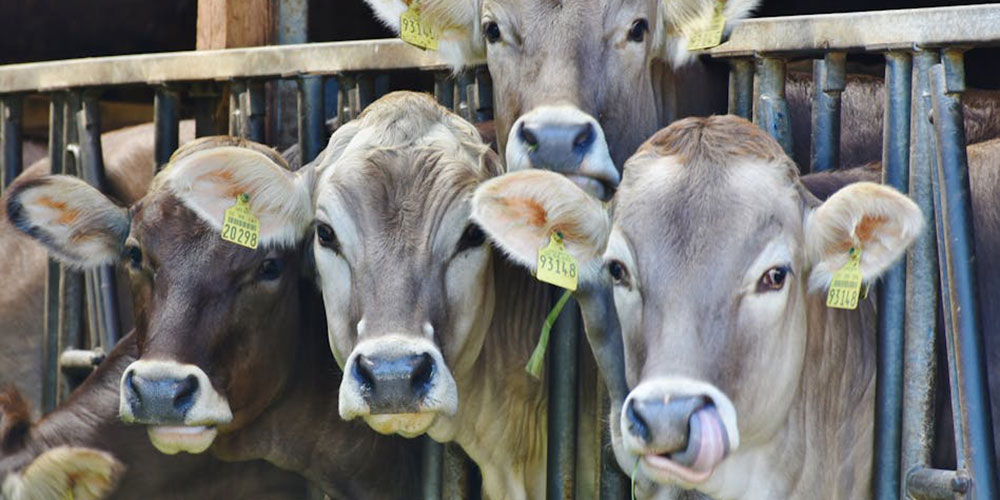You probably are aware of the rising cost of eggs and the spread of bird flu. There was even a salmonella outbreak linked to eggs in 2024.. Food recalls like these are seen in different provision categories over the years.
While that might seem concerning, imagine how much worse those situations would have been if the public weren’t told of the risks. You might be surprised to know there are professionals working to ensure a safe food supply is available. And product recalls are just one way they maintain food safety standards.
Curious to learn more? You’ve come to the right place. Get ready for a crash course covering how everything edible is protected, why veterinarians play an essential role, and what you can do to promote food safety.
How are food safety standards maintained?
There are numerous federal agencies involved in food safety, even some you might not expect. They all work collaboratively to protect edible products in a number of ways.
1. Completing inspections
The United States Department of Agriculture (USDA) assesses meat, poultry, eggs, and the facilities in which they’re processed. Inspections focus heavily on sanitation and standardizing processes across all production facilities. Safety inspections are required, but grading for quality is voluntary.
Meat and poultry products obviously aren’t the only foods we eat. The Food and Drug Administration (FDA) takes the lead in setting retail food standards by offering guidance for state and local inspectors. The FDA regulates dietary supplements, infant formula, pet food, and many other products. There are standards for the growing, harvesting, packing, and holding of produce for human consumption.
Even the EPA has a hand in food safety, regulating pesticide use to ensure produce remains safe for consumption. And these agencies don’t work in silos. There’s a considerable amount of collaboration in place.
2. Regulating imports and exports
In the United States, may of our fruits, vegetables and other foods are both exported and imported. Both the USDA and the FDA play a part in making sure those edible products from abroad are safe. Each organization oversees the same types of foods from other countries as they do from within the US.
3. Assessing food safety risk
Even when foods pass necessary inspections, there’s still a chance for problems to arise further down the supply chain. The risk of contamination depends on how a product is stored, how it’s transported, and more. The FDA and USDA work to identify vulnerable points along the path to your table, and then come up with strategies to minimize the chances of contamination.
4. Responding to outbreaks and threats
Foodborne illness outbreaks can require help from the Centers for Disease Control and Prevention (CDC). This agency collaborates with numerous other partners to effectively respond to widespread foodborne illness. Scientists at the CDC have also conducted important research that enables them to more quickly identify the food sources of various outbreaks.
How are veterinarians helping?
The American Veterinary Medical Association (AVMA) explains veterinarians are the only health professionals involved in every aspect of the food chain. A veterinarian’s education and training makes them uniquely qualified to address animal health, which also has implications for human wellness. And Doctors of Veterinary Medicine (DVMs) are employed at each of the agencies already mentioned. They help breed food animals, ensure processing facilities are sanitary, and more.
While there are already many vets working to uphold food safety standards, demand is only going to increase as the population grows. There are already food animal veterinarian shortages all across the country. The good news is that aspiring vets could enjoy considerable job security by pursuing a career in food supply veterinary medicine.
What can you do to promote food safety standards?
Wondering whether you play any part in the fight against foodborne illness? The answer is yes. There are some important rules individuals should follow to protect themselves and their loved ones. The USDA focuses on four main strategies:
Clean: It’s important to frequently wash your hands as well as the surfaces that come in contact with food.
Separate: To prevent cross-contamination, keep raw meat, poultry, and seafood separate from other foods. That goes for shopping at the supermarket, at-home storage, and preparing foods prior to cooking.
Cook: Make sure to cook meat, poultry, and eggs to a safe temperature. It’s also important to keep any hot food hot. You can quickly and easily check temperatures with a thermometer.
Chill: Properly refrigerate and freeze perishable items. When storing leftovers, it’s a good idea to transfer the foods to shallow containers to help them cool down faster before chilling. This reduces the amount of time you need to leave foods out, which minimizes the chances of bacterial contamination.
Help create a healthier world
Now that you have a better idea of how the government upholds food safety standards, you can see that it’s a complex process. Professionals from numerous agencies need to work together to make sure that everything from produce to poultry is safe for consumption. It helps that these various parties all employ veterinarians to help them work toward a common goal.
And keeping the food supply safe is just the beginning of how veterinarians contribute to human health. They also promote beneficial human–animal relationships, ensure safe living environments, and help prevent the spread of diseases from animals to humans.
Learn more about how vets are working to protect worldwide wellness by reading our article “What is a Zoonotic Disease? Understanding This Public Health Concern.”
This article has been updated from January 2021 to include current facts and figures.

